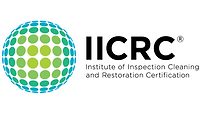The Importance of Cleaning Before Drying in Water Damage Restoration

Image generated by Google Gemini
Professional Restorers possess a solid foundation in knowledge with regard to the science of drying following a water loss within a structure. From the control of ambient temperatures to the application of thermal energy to wet materials, the science of drying is understood by many within the restoration industry. While the establishment of a successful drying strategy is paramount, is the restoration industry overlooking an equally important topic?
The evaluation for the necessity of cleaning and cleaning properly prior to drying is equally important as properly drying a structure following a water damage. In an ideal world, houses and businesses receive adequate and routine cleaning to promote a clean and healthy environment. However, those of us in the restoration industry are well aware that we do not operate within an ideal environment at all times.
Unfortunately for some, cleaning is viewed as the application of an anti-microbial before bringing drying equipment onto a loss site and turning it on. The application of an anti-microbial may be a component of the cleaning process, but it should not be the only one.
The methods, tools, and products used to clean a surface can vastly vary depending on the sum of multiple components of a loss site. Considering the source of water and its Category is a large component, but the overall environment of the structure should also be considered. Detaching a refrigerator may uncover years of dog treats, fur and other organic material hidden from sight. Carelessly cutting up carpet and pad has the potential to dislodge countless contaminants from within. Air movers used to exhaust humidity from a structure may distribute particulates throughout a structure. There are countless ways that Restorers can potentially cause disturbances within a “dirty” structure that could adversely affect occupants or workers.
As Restorers work to establish their drying strategy, we should also be evaluating the structure for potential contaminants and how to successfully remove them prior to drying. Source removal is always the best option, but the methods and tools may differ depending on what is present.
 Image generated by Google Gemini
Image generated by Google GeminiA HEPA vacuum may be used to remove pet fur, dust, sand, or other small contaminants that are not bonded to surfaces within a structure. Other contaminants may need the application of a mechanical action and detergent to remove. An abrasive towel or cloth along with a detergent may certainly be warranted in the mitigation phase of a Category 2 or 3 loss. Failure to remove contaminants prior to drying can and often will lead to rightful complaints of odors and airborne contaminants by property owners. The removal of contaminants after drying has been completed will almost certainly be more laborious and costly from a financial perspective. Additionally, our customers may form a negative opinion of our professional services.
While not all water damages will require the application of an anti-microbial, certainly there are those that will. Perhaps a benefit of the COVID-19 virus was the heightened level of discussions and emphasis placed on cleaning methods and techniques. A crucial step in applying an anti-microbial is the preparation of the surface(s) prior to applying the anti-microbial. To properly prepare a surface for an anti-microbial, Restorers should clean the surface with a detergent to remove as much organic material as possible.
Failure to remove organic material prior to applying an anti-microbial may result in little to no efficacy of the anti-microbial as it is neutralized by the organic material that was not removed. Most, but not all anti-microbials within the restoration industry rely on positively charged ions that disturb or pierce the membranes of bacteria to achieve its kill factor. By not cleaning properly before the application of an anti-microbial, a restorer runs the risk of leaving behind potentially harmful bacteria and furthermore, being inefficient and wasteful with consumables.
As Professional Restorers there is a sense of pride in understanding the science of drying, responding quickly following a loss and managing the conditions to correctly dry a structure. With the aforementioned sense of pride, Professional Restorers should equally have a desire for creating and working within a clean environment. A clean environment is not only owed to our clients, but to our team members as well. Before starting your next water damage restoration project, step back and ask yourself – “Is this structure clean?”
Looking for a reprint of this article?
From high-res PDFs to custom plaques, order your copy today!










